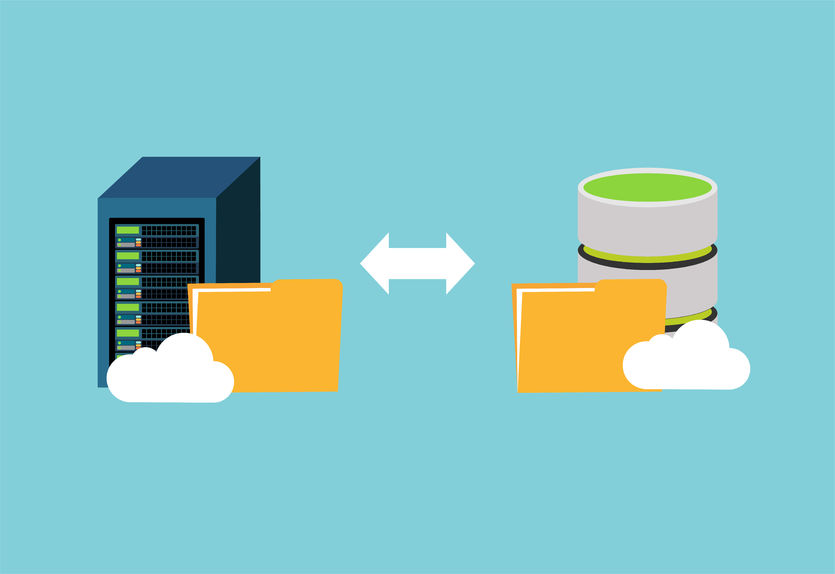Welcome to the fascinating world of BIND – the force behind the seamless web browsing experience we all enjoy today! As one of the most widely used DNS software applications globally, BIND, or Berkeley Internet Name Domain, holds the key to translating human-readable domain names into the magical IP addresses that connect us to websites and online resources. In this today’s article, we will discover the history, features, and capabilities that have made it an amazing DNS management tool.
Table of Contents
What is BIND?
BIND, which stands for Berkeley Internet Name Domain, is one of the most widely used DNS software applications in the world. It is an open-source, robust, and flexible DNS server that translates human-readable domain names into IP addresses, making it possible for users to access websites and other resources on the internet. BIND plays a critical role in maintaining the functionality and accessibility of the internet as we know it today.
History of BIND
The history of BIND dates back to the early 1980s when it was developed at the University of California, Berkeley, by four graduate students.
BIND’s first version, known as BIND 4, was released in 1988. It provided basic DNS functionality and quickly gained popularity within the internet community. However, BIND 4 had several limitations, and security issues occurred as the internet grew and became more complex.
To overcome these challenges, BIND 8 was introduced in 1997, bringing significant improvements in terms of security, performance, and scalability. The development of BIND continued, leading to the release of BIND 9 in 2000, which is the currently supported version. BIND 9 is a major upgrade from its predecessors and offers enhanced features, security, and support for modern DNS standards.
Experience Industry-Leading DNS Speed with ClouDNS!
Ready for ultra-fast DNS service? Click to register and see the difference!
How to use it?
Setting up and using BIND requires some technical knowledge and expertise. Here’s a general overview of the steps involved in deploying BIND as a DNS server:
- Installation: Start by installing BIND on your preferred operating system. BIND is available for most Unix-like systems.
- Configuration: Once installed, configure BIND by editing its configuration file (typically named named.conf). In this file, you define options, set up DNS zones, and configure access controls.
- Zone Files: For each domain you want to manage, you need to create zone files. These files contain DNS records, such as A records (for mapping domain names to IP addresses), MX records (for email servers), and more.
- Forwarding and Caching: BIND can act as a forwarding and caching DNS server. By configuring forwarders, you can have BIND forward DNS queries to other DNS servers, helping to reduce the load on your server and improve response times.
- Starting the Service: After configuration, start the BIND service, and it will begin handling DNS requests for the specified zones.
Make sure to keep BIND updated with the latest security patches and follow best practices to ensure the security and reliability of your DNS infrastructure.
Features & Capabilities of BIND
BIND’s popularity can be attributed to its impressive range of features and capabilities. Some of the key features include:
- Authoritative DNS: It can function as an authoritative DNS server, serving as the primary source for domain zone data. When configured as an authoritative server, BIND provides DNS records that define how domain names relate to IP addresses and other resources.
- Forwarding and Caching: It can act as a caching resolver, reducing the load on upstream DNS servers by caching frequently accessed DNS records.
- Basic DNS Load Balancing: BIND supports basic DNS load balancing using multiple IP addresses for a single domain name. It can distribute the load across multiple servers by returning different IP addresses (IPv4 or IPv6) in response to DNS queries, ensuring better performance and redundancy.
- DNS Notify: It uses DNS Notify, a mechanism that allows Authoritative servers to inform Secondary DNS servers when changes to a zone occur. This notification process helps to ensure that all Authoritative servers for a domain are up-to-date with the latest DNS information.
- Incremental Zone Transfer (IXFR): When a Secondary DNS server needs to update its zone data from the primary DNS server, a full zone transfer can be resource-intensive and unnecessary. With IXFR, it is possible to perform partial zone transfers, transmitting only the changes since the last update.
- DNSSEC Support: BIND was one of the first DNS servers to support DNSSEC, a suite of extensions that add an additional layer of security to the DNS. DNSSEC helps prevent various DNS-based attacks, such as DNS cache poisoning.
- Dynamic Updates: It supports dynamic updates to DNS records, enabling hosts to modify their DNS entries. This feature is particularly useful in environments where IP addresses frequently change, such as DHCP networks.
- IPv6 Ready: BIND has robust support for IPv6, the next-generation internet protocol. Therefore, it can handle DNS resolution for domains and devices that use IPv6 addresses.
- Split DNS: With BIND, administrators can set up split DNS configurations, where different DNS responses are given based on whether the query comes from within the local network or from the public internet.
- TSIG (Transaction Signature) Support: It supports TSIG for secure communication and authentication between DNS servers, ensuring the integrity and authenticity of DNS data exchanges.
- Views: It allows administrators to define different “views” of DNS data based on factors like client IP address or network segment. This enables organizations to have separate DNS configurations for internal and external users.
BIND Advantages
Here are some of the main benefits of implementing this tool:
- Open-Source: Being open-source software makes it freely available to anyone and a cost-effective choice for organizations of all sizes.
- Reliability: BIND has a proven track record of stability and reliability. Its long history in the field has allowed it to mature and become a trusted DNS solution.
- Community Support: With a massive user base and an active community, BIND benefits from regular updates, security patches, and continuous development.
- Security: BIND’s support for DNSSEC and regular security updates ensure that your DNS infrastructure remains secure and less exposed to attacks.
- Scalability: BIND DNS can handle a large number of DNS queries efficiently, making it suitable for organizations with high-traffic websites or complex DNS needs.
- Customization: Its flexibility allows administrators to adjust the DNS settings to their specific requirements and needs.
BIND Disadvantages
Some drawbacks that you should consider include the following:
- Complexity: The configuration of BIND DNS and setup can be challenging for users without technical knowledge. Administrators need to have a good understanding of DNS and networking concepts.
- Maintenance: It requires regular maintenance and updates to guarantee it remains secure and up-to-date with the latest DNS standards.
- Resource Intensive: High performance comes at the cost of resource consumption. Running BIND on low-end hardware might lead to performance issues.
- Security Risks: Like any software, BIND is not immune to security vulnerabilities. Administrators need to stay watchful and promptly apply security patches to mitigate risks.
Alternatives
While BIND is a popular choice, alternative DNS servers are available, each with its own features and strengths. Some notable alternatives include:
- PowerDNS: This DNS server offers high performance and it offers numerous opportunities. It provides a range of backends, including SQL databases, allowing flexible DNS data storage.
- NSD (Name Server Daemon): NSD focuses on high performance and simplicity. It is designed to be secure and easy to configure.
- Windows DNS Server: For organizations with a Windows-based infrastructure, the built-in Windows DNS Server can serve as a suitable alternative to BIND.
- Knot DNS: Knot DNS is known for its modern architecture, high performance, and support for DNSSEC.
The choice of DNS server depends on specific requirements, infrastructure, and level of expertise of the administrators.
Who Uses BIND and Why?
BIND (Berkeley Internet Name Domain) is the most commonly used DNS server software on the Internet. Its versatility and robustness make it the preferred choice for a wide range of users, particularly those who manage DNS servers on a day-to-day basis.
The primary users of BIND are network administrators and system administrators. These professionals are responsible for maintaining the infrastructure that ensures smooth and reliable Internet connectivity within organizations. Here’s why they prefer BIND:
- Comfort with Linux/UNIX: BIND is deeply rooted in the UNIX systems, and its management often requires familiarity with Linux/UNIX environments. Administrators who are comfortable operating within these systems find BIND to be a natural fit.
- Open-Source Flexibility: Unlike other DNS solutions, BIND is open-source. This allows administrators to customize and optimize their DNS infrastructure to meet specific needs. The ability to modify and extend the software provides a significant advantage in addressing unique requirements.
- Standards Compliance: BIND closely follows IETF standards (RFCs). This compliance ensures that BIND operates consistently with global Internet standards, ensuring stability in network operations.
Why BIND Is Still Relevant Today
Despite being one of the oldest DNS server implementations, BIND (Berkeley Internet Name Domain) remains a cornerstone of modern DNS infrastructure. Its ongoing relevance is because it continues to evolve to meet the modern demands of today’s internet.
BIND is actively maintained by the Internet Systems Consortium (ISC), with frequent updates that introduce new features, improve performance, and patch security vulnerabilities. It supports all the latest DNS standards, including DNSSEC, IPv6, TSIG, and even newer protocols like DNS over TLS (DoT).
What makes BIND especially applicable today is its open-source nature and adaptability. It offers unmatched flexibility and customization for organizations that require full control over their DNS configuration. It’s highly configurable, and trusted by enterprises, ISPs, and governments. Its ability to handle complex deployments, such as split-horizon DNS and dynamic updates, makes it ideal for both internal networks and public-facing infrastructure.
Thanks to its reputation, feature set, and adaptability, BIND is just as essential today as it was decades ago.
Conclusion
In conclusion, BIND remains a powerful and widely adopted DNS management tool, vital for the functionality and accessibility of the internet. As an open-source, reliable, and flexible DNS server, it efficiently translates domain names to IP addresses, enabling smooth web access. With features like DNSSEC support, dynamic updates, and IPv6 compatibility, it offers enhanced security and adaptability. While it may require technical expertise and regular maintenance, its cost-effectiveness, stability, and scalability benefits make it a preferred choice for organizations of all sizes. As technology advances, this tool continues to play a significant role in shaping the future of internet infrastructure.






